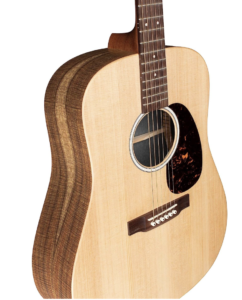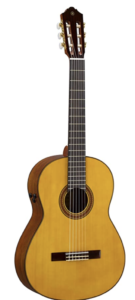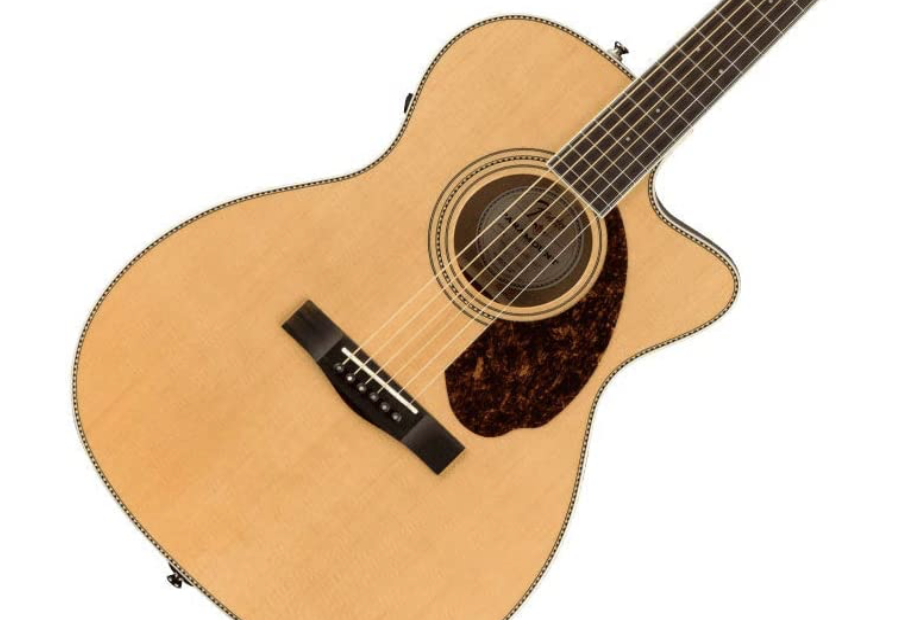 When it comes to classical guitar vs acoustic instruments, the guitar stands out as one of the most popular and versatile choices. However, within the guitar family, there are two primary categories that often spark confusion among beginners and even experienced players – the classical guitar and the acoustic guitar.
When it comes to classical guitar vs acoustic instruments, the guitar stands out as one of the most popular and versatile choices. However, within the guitar family, there are two primary categories that often spark confusion among beginners and even experienced players – the classical guitar and the acoustic guitar.
While they share some similarities, they have distinct features and are used in different musical contexts. In this article, we will delve into the differences between classical and acoustic guitars to help you make an informed decision when choosing the right instrument for your musical journey.
Body Design and Construction
One of the most noticeable differences between classical and acoustic guitars lies in their body design and construction. Classical guitars have a wider neck and a flat fingerboard, making it easier to execute fingerstyle playing and intricate classical music techniques. The body is typically smaller and made of wood such as spruce or cedar for the top and mahogany or rosewood for the back and sides, producing a warm and mellow tone.
On the other hand, acoustic guitars often have a slimmer neck and a slightly curved fingerboard, making them more suitable for strumming and flatpicking styles. Acoustic guitars usually come in larger body sizes, such as dreadnought or concert, and they are constructed with various tonewoods, including spruce, mahogany, and maple, resulting in a brighter and more robust sound.
Also Read:
Epiphone Acoustic Guitar Models: Classic Sound with a Contemporary Twist
Yamaha CG-TA: TransAcoustic Classical Guitar
Seven Master Classic Rock Guitar Players
Quick tips to play the classical guitar
Strings and Tuning
 Classical guitars use nylon strings, which are softer on the fingers and produce a warm, rich tone. They are arranged in three treble strings made of clear nylon and three bass strings wound with various materials such as silver, copper, or bronze. The tuning is standard for classical guitars: E-A-D-G-B-E, with the top three strings being an octave higher than the same notes on the lower three strings.
Classical guitars use nylon strings, which are softer on the fingers and produce a warm, rich tone. They are arranged in three treble strings made of clear nylon and three bass strings wound with various materials such as silver, copper, or bronze. The tuning is standard for classical guitars: E-A-D-G-B-E, with the top three strings being an octave higher than the same notes on the lower three strings.
Acoustic guitars, on the other hand, use steel strings, which offer more projection and sustain but can be harsher on the fingertips for beginners. The tuning for acoustic guitars is also standard: E-A-D-G-B-E, but the strings are all made of steel.
Playing Style and Repertoire
Classical guitars are predominantly used for playing classical music and fingerstyle compositions. The wider neck and nylon strings facilitate complex fingerpicking techniques and allow players to produce delicate nuances in their playing. Classical guitar repertoire includes pieces by renowned composers such as Bach, Tarrega, and Sor, as well as traditional folk and flamenco music.
Acoustic guitars are more versatile and can be found in various musical genres, including folk, country, rock, pop, and blues. Their steel strings and brighter sound make them ideal for strumming chords and playing lead solos. Acoustic guitarists can perform a wide range of music, from simple campfire songs to intricate fingerstyle arrangements.
Amplification and Electronics
 While classical guitars are traditionally played acoustically, there are models available with built-in pickups and preamps for amplification in live performances or recording sessions. However, the focus of classical guitarists remains primarily on the acoustic sound and the subtleties of their playing.
While classical guitars are traditionally played acoustically, there are models available with built-in pickups and preamps for amplification in live performances or recording sessions. However, the focus of classical guitarists remains primarily on the acoustic sound and the subtleties of their playing.
Acoustic guitars often come equipped with pickups and onboard electronics, allowing easy amplification for performances or recording. This makes them a popular choice for gigging musicians who need versatility in various musical settings.
Playing Techniques
Classical guitars have a unique playing technique that involves using the fingers, mainly the thumb, index, and middle fingers, to pluck the strings. This technique is known as fingerstyle or fingerpicking. Classical guitarists also use their nails to produce different tones and dynamics. The emphasis on precision and control allows for expressive playing and intricate ornamentation.
Acoustic guitars, on the other hand, are often played using a pick or plectrum, allowing for a brighter and more percussive sound. Guitarists can also use their fingers for fingerpicking on an acoustic guitar, but the steel strings offer a different tonal quality compared to the nylon strings of a classical guitar.
 String Tension
String Tension
Nylon strings on a classical guitar have lower tension than steel strings on an acoustic guitar. The lower tension makes it easier on the fingers, especially for beginners, and allows for more comfortable and extended playing sessions.
The higher tension of steel strings on an acoustic guitar requires more finger strength and can cause discomfort for some beginners initially. However, many players appreciate the increased projection and responsiveness that comes with higher string tension.
Price Range
In general, classical guitars tend to be more affordable than acoustic guitars, especially when considering high-quality instruments. This is partly due to the materials used, as well as the manufacturing processes for each type of guitar.
While there are affordable acoustic guitars available, high-end acoustic models can be quite expensive, especially those made with premium tonewoods and advanced electronics.
 Construction and Origin
Construction and Origin
Classical guitars often follow traditional construction methods with fan bracing, giving them their characteristic warm and balanced sound. They are commonly associated with European and Latin American guitar-making traditions.
Acoustic guitars, particularly steel-string models, may have X-bracing or other bracing patterns, depending on the manufacturer’s design. They have a more robust and brighter sound, which is well-suited for a wide range of musical genres, including contemporary styles like rock and pop.
Sound Projection
Classical guitars are known for their focused and intimate sound, making them suitable for smaller gatherings and solo performances. They may not have the same level of projection as larger acoustic guitars, but their unique tonal qualities are ideal for intricate classical music.
Acoustic guitars, especially dreadnought or jumbo-sized models, are designed for maximum sound projection and are commonly used in band settings and larger performances where a more powerful sound is needed.
Conclusion
In summary, the choice between a classical guitar and an acoustic guitar depends on your musical preferences, playing style, and the type of music you intend to play.
If you are drawn to the intricate world of classical music and fingerstyle playing, a classical guitar with its nylon strings and wider neck would be a great fit.
On the other hand, if you envision yourself strumming chords and exploring a wide range of musical genres, an acoustic guitar with steel strings and a slimmer neck would be more suitable.
